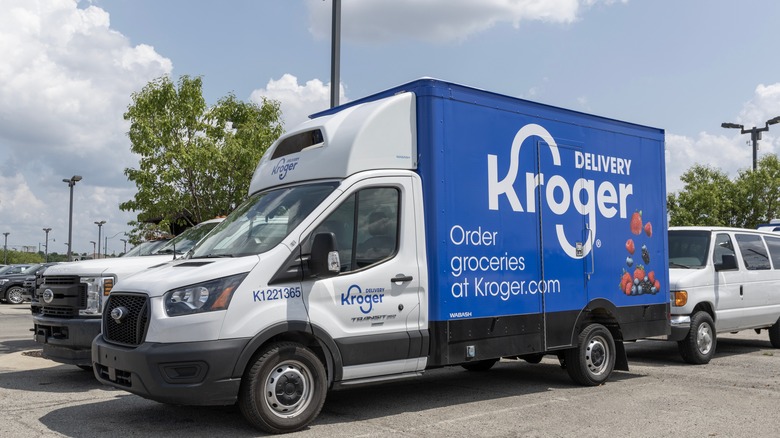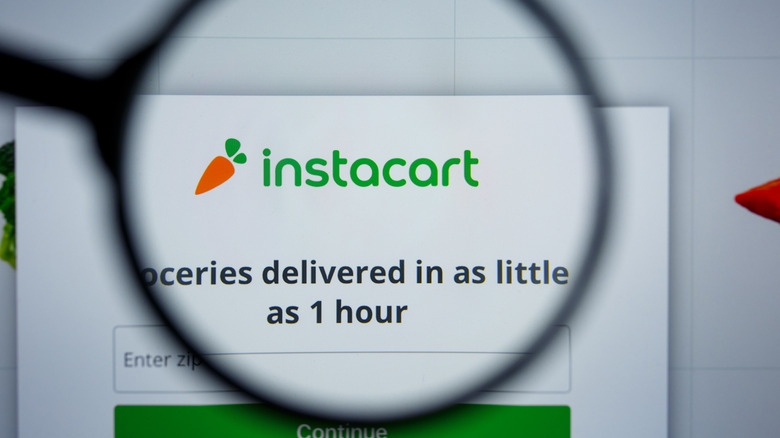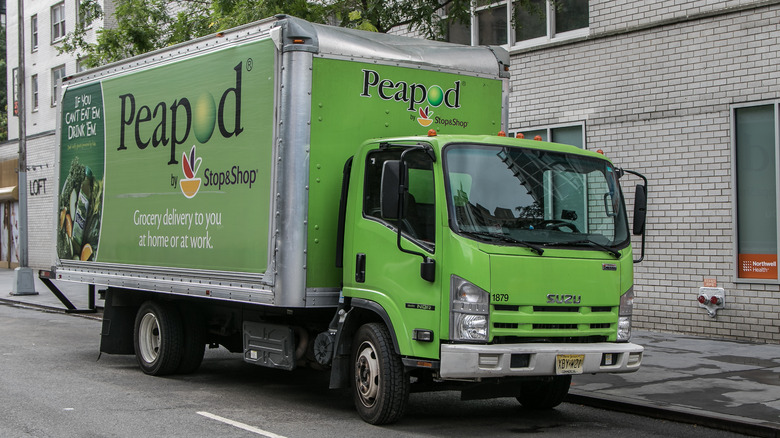If You Hate Kroger's Boost Program, You're Wrong
When Kroger launched its Boost grocery delivery program, it really wasn't on my radar. While I do most of my shopping for non-food items online, I actually enjoy going to the supermarket. Weird, I know, but there's at least one other person out there (my dad) who sees grocery shopping as a hobby. Also, I wasn't overly thrilled with my previous experiences with other grocery delivery services, including Amazon Fresh, Instacart, Walmart Plus, and Peapod, so I really didn't pay too much attention. That is, until my local Kroger affiliate, Pick 'n Save, made me an offer I couldn't refuse: a free year of delivery as a perk for applying for their credit card.
I've never actually used said credit card because the cash-back bonus only kicked in if you used a virtual pay option I never got the hang of, but I've used Boost many times over the past year in addition to making near-weekly trips to the store. In fact, I did something pretty unprecedented for me. I actually paid for another year! Okay, so they did offer me a $20 discount on the $59 yearly fee, but still, I'm someone who's never set foot in a Costco because I refuse to pay to shop, so the fact that I made an exception for Boost is actually quite a testimonial.
How Boost works
Boost offers two tiers of membership. At the lower one, which costs $59 per year or $7.99 per month, you get free next-day delivery, although you can always pay a few bucks more for same-day delivery if you really need it. For $99.99 per year or $12.99 per month, next-day delivery is free. At both levels, the minimum order is just $35, which is pretty reasonable. Or, in my case, aspirational — even when there's only one thing I need to buy, there are always a bunch of bargains I can't pass up. (My freezer's packed with BOGO chicken breasts, and I have two refrigerators full of discount yogurt.)
One perk you get with Boost that some people absolutely love is earning double fuel points. You get one for each dollar you spend (two for Boost), and 100 points gets you 10 cents off per gallon at select gas stations. You can use up to 1,000 in a transaction to save $1 per gallon. Fuel points are kind of a non-factor for me, though. Over the past few years, the option to use Kroger rewards points seems to have disappeared from all of the pumps in my area. Now, I don't even bother looking and fill my tank wherever it's least expensive to do so.
What other people don't like about it
Since I don't mind waiting for my groceries, my Boost membership is at the lower tier, but it seems many of the complaints people have about Boost kick in at the higher level. While most next-day orders are picked, packed, and delivered by Kroger employees, same-day orders are frequently filled by Instacart. One Redditor calls this a "bait and switch" because Kroger drivers don't accept tips. However, you do need to tip Instacart. Other Boost customers have expressed annoyance with a constant barrage of texts from Instacart shoppers, but my next-day Kroger deliveries tend to be fairly low contact apart from a heads-up that the groceries are arriving.
Yet another issue some people have is that Boost-exclusive coupons are now visible to non-Boost customers. When the savings don't ring up because they're not members, they tend to get upset. It would be nice if Kroger could fix this so that only members see the deals, but customers also bear some responsibility. After all, you can also clip a "Friday only" coupon on a Wednesday, but if you shop on Thursday, it won't ring up. Anyone who interprets this as Kroger's attempt to make them pay to use coupons is missing a salient point of the Boost program: It's a grocery delivery service where the fee covers the delivery. Savings and fuel points are nice perks, but it's like saying the only reason to get a Costco membership is for cheap hot dogs.
What I don't like about it
The main frustration I have with Boost is something I've experienced with other grocery delivery services: The cart defaults to allowing the shopper to select replacements for all items. In most cases, I'm shopping the sales, so if I can't get that BOGO store brand butter, I sure don't want two pounds of full-price name brand butter. However, there is an option to go through each item one by one and opt out of having it replaced (or you can select a specific replacement), so it's just a minor hassle.
Another thing I'm not crazy about is the fact that paper coupons can't be used with Boost. While Kroger offers a bunch of digital deals, some delivery-specific, my Pick 'n Save tends to send me coupons in the mail a few times a month. Some of these are for freebies or a fairly significant discount, so I'd love to be able to use them online, but they're in-store-only.
Also, I do miss my "Woohoo!" buys. These were nicknamed for a sticker Kroger once used to indicate markdowns, although it's now adopted a more sedate "Reduced" label. Most of the meat and a fair amount of the produce I buy is on clearance, and as these items are determined by each location's overstock, they're not available online. Boost does, however, offer flash deals at checkout that are up to half off on items I'd buy anyway, and they're not even nearing their expiration dates.
How it stacks up against other services I've used
My first grocery delivery experience could have gone a lot better. Back in the late '00s, when I lived in the Washington, D.C. area, the Peapod delivery van ghosted me. To make matters worse, my then three-year-old son and I were being filmed for a local news piece on grocery shopping, and while I looked like a sad, pathetic fool in contrast with the wealthy suburbanite who got her groceries on time, Peapod gave the impression of being very zip code-ist. I did wind up using the service a few more times after we moved to a different (but equally unprestigious) neighborhood, and I must say it improved significantly after seemingly being called out on Channel 5.
Fast-forwarding to this decade, I started using Amazon Fresh right before the pandemic and was luckily grandfathered in when that service started limiting new customer sign-ups. It was okay in a pinch, but the grocery selection was (and remains) limited and expensive, so I bailed when the minimum order went from $35 to $150. Even though it's come down a bit now, I no longer have Prime since this also got pricey. I've only used Instacart a time or two because I don't care for the markups, but I do like Walmart Plus because its prices are the same as in-store. Walmart's not my go-to grocery, though, and the sole membership level is priced comparably to Boost's higher tier, so I didn't continue the service after a free trial.




